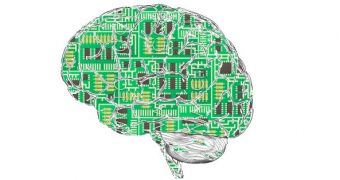The future is upon us! A computer has managed to fool humans into thinking that it’s a real person, becoming the first program to pass the Turing Test.
The test is named after Alan Turing, a mathematician that is considered to be one of the fathers of computer science. The challenge mentioned above is to persuade at least 30 percent of humans that the computer is a real person.
Following a new set of tests conducted at the Royal Society in London, the Russian-made program Eugene Goostman fooled 33 percent of people that it was a 13-year-old boy from Ukraine.
“Our main idea was that he can claim that he knows anything, but his age also makes it perfectly reasonable that he doesn't know everything. We spent a lot of time developing a character with a believable personality,” said Vladimir Veselov, one of the creators of the program, according to The Independent.
Veslov added that in the past year, they had improved the dialog controller, which makes the conversation more human-like when compared to programs that just answer questions. He refers to other similar software that passed the test in the past, but which simply answered a pre-defined list of questions rather than reply in spontaneous conversation.
While this is a scientific success by all standards, it raises a lot of concerns about the future of computing. The imagined worlds from the movies where artificial intelligence ruled humans immediately pop to mind when talking about computer programs that can think for themselves.
Until then, however, there’s a more pressing concern for cyber criminality, especially since people have fallen prey to less crafty plots.
Kevin Warwick, a visiting professor at the University of Reading and deputy vice-chancellor for research at Coventry University, has told The Independent that the Turing Test is a vital tool for combating this threat. “It is important to understand more fully how online, real-time communication of this type can influence an individual human in such a way that they are fooled into believing something is true… when it fact it is not,” he said.
The test that the program has managed to beat was created by Alan Turing in a paper in 1950, named “Computing Machinery and Intelligence.” The scientist said that because the concept of thinking was too hard to define, what matters was whether a computer could imitate a real human being and fool others into believing it was true.
Alan Turing died on June 7, 1954, which means that his test was passed on the 60th anniversary of his passing.

 14 DAY TRIAL //
14 DAY TRIAL //